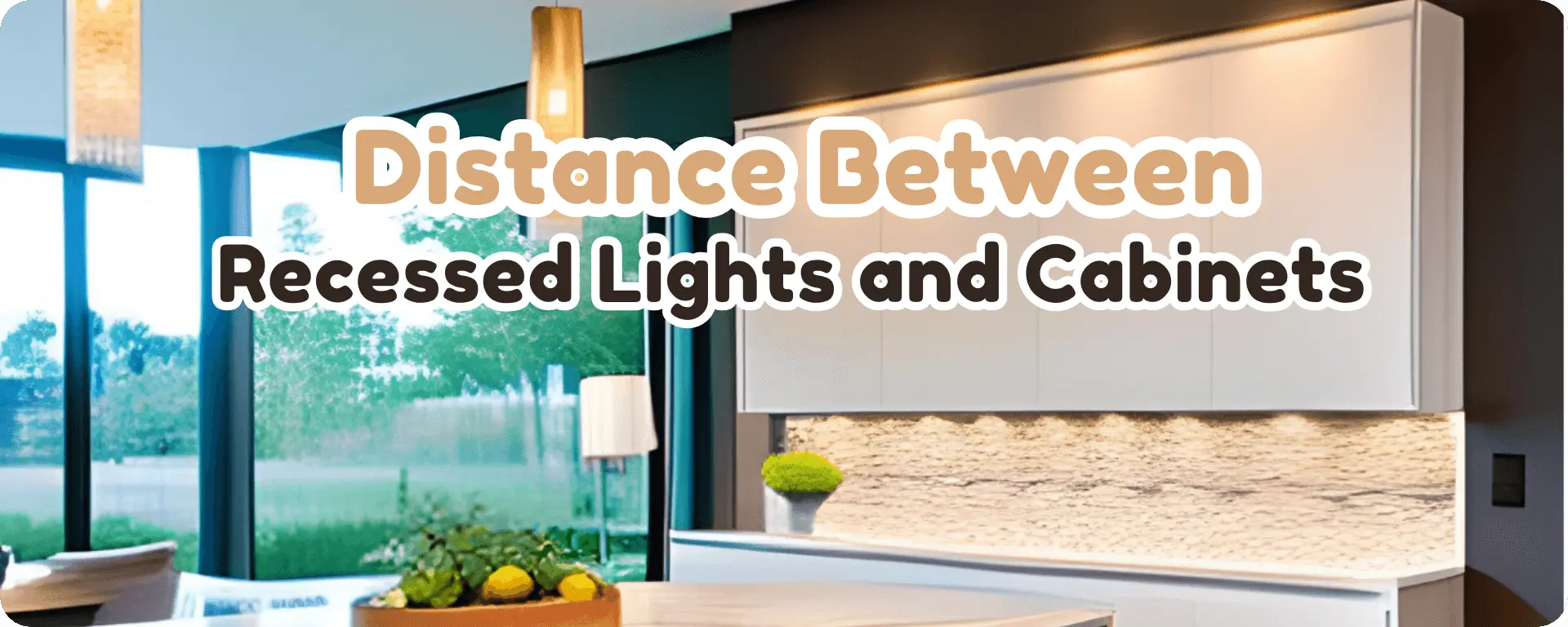Determining Optimal Recessed Light Distance

The distance between recessed lights and cabinets is crucial for achieving optimal illumination and avoiding glare. The ideal distance depends on various factors, including the type of light fixture, the desired illumination level, and the cabinet style.
Factors Influencing Recessed Light Distance
The following factors significantly influence the optimal distance between recessed lights and cabinets:
- Type of Light Fixture: Different recessed light fixtures have varying beam angles and light distribution patterns. For instance, a fixture with a narrow beam angle will require a closer distance to the cabinet to provide adequate illumination, while a wide-angle fixture can be placed further away.
- Desired Illumination Level: The desired illumination level depends on the purpose of the space. For example, a kitchen requires higher illumination than a bedroom. A higher illumination level typically necessitates closer placement of recessed lights to the cabinets.
- Cabinet Style: The cabinet style can also influence the optimal distance. For example, cabinets with open shelves or glass doors may require closer placement of recessed lights to illuminate the contents effectively.
Recommended Distances for Different Recessed Light Fixtures
- Recessed Downlights: These fixtures have a wide beam angle, making them suitable for general illumination. A recommended distance for recessed downlights from cabinets is 18 to 24 inches, depending on the specific fixture and desired illumination level.
- Recessed Track Lighting: Track lighting allows for greater flexibility in positioning and directing light. The recommended distance for recessed track lighting from cabinets is 12 to 18 inches, allowing for focused illumination on specific areas.
- Recessed Accent Lighting: Accent lighting uses focused beams to highlight specific features. The recommended distance for recessed accent lighting from cabinets is 6 to 12 inches, providing a dramatic effect.
Impact of Bulb Types
The type of bulb used in recessed lights also influences the required distance from cabinets. Different bulb types have varying light output, color temperature, and energy efficiency.
- LED Bulbs: LED bulbs offer high energy efficiency and long lifespans. Due to their focused beam, LED bulbs can be placed slightly further away from cabinets compared to incandescent bulbs. A recommended distance for LED bulbs is 18 to 24 inches.
- Halogen Bulbs: Halogen bulbs provide bright and warm light. However, they are less energy-efficient than LED bulbs and generate more heat. Recommended distances for halogen bulbs are similar to LED bulbs, around 18 to 24 inches.
- Incandescent Bulbs: Incandescent bulbs are the least energy-efficient but offer a warm and inviting light. Due to their wider beam angle and heat generation, incandescent bulbs require closer placement to cabinets, typically around 12 to 18 inches.
Installation Considerations and Best Practices: How Far Recessed Light From Cabinet

Installing recessed lights near cabinets requires careful planning and execution to ensure both functionality and safety. This section Artikels the key considerations and best practices for a successful installation.
Wiring and Electrical Connections, How far recessed light from cabinet
Before starting the installation, it is crucial to understand the electrical wiring requirements and ensure the proper connections are made.
- Determine the Circuit Capacity: Calculate the total wattage of the recessed lights you plan to install and ensure the existing circuit can handle the load. If necessary, consult an electrician to upgrade the circuit.
- Use the Correct Wire Gauge: Choose the appropriate wire gauge based on the wattage of the lights and the distance from the power source. Thicker wires are needed for higher wattage and longer distances.
- Connect to a GFCI Outlet: For installations in areas prone to moisture, such as kitchens and bathrooms, it is essential to connect the recessed lights to a Ground Fault Circuit Interrupter (GFCI) outlet.
- Use Junction Boxes: Install junction boxes to connect the wiring safely and provide access for future maintenance.
- Properly Ground the System: Ensure all components, including the lights, wiring, and junction boxes, are properly grounded to prevent electrical shocks.
Insulation and Fire Safety
Recessed lights near cabinets may be located close to insulation, which can pose a fire hazard if not handled correctly.
- Use IC-Rated Fixtures: Install recessed lights that are specifically designed for insulation contact (IC-rated). These fixtures have a built-in heat shield to prevent the insulation from igniting.
- Maintain Proper Spacing: Leave adequate spacing between the recessed light fixture and the insulation to allow for proper airflow and heat dissipation. Refer to the manufacturer’s instructions for specific spacing requirements.
- Use Fire-Resistant Materials: If installing in a location where insulation is unavoidable, use fire-resistant materials like fiberglass insulation instead of traditional cellulose insulation.
- Inspect and Maintain Regularly: Regularly inspect the recessed lights and surrounding areas for signs of overheating or damage. Replace any damaged components immediately.
Installation Methods: New Construction vs. Retrofit
There are two primary methods for installing recessed lights: new construction and retrofit. Each method has its own advantages and disadvantages.
| Method | Pros | Cons |
|---|---|---|
| New Construction |
|
|
| Retrofit |
|
|
Achieving a Clean and Professional Finish
To ensure a clean and professional finish, consider the following tips:
- Plan the Layout Carefully: Before drilling any holes, carefully plan the layout of the recessed lights to ensure they are evenly spaced and positioned for optimal lighting.
- Use a Level: Use a level to ensure the recessed lights are installed flush with the ceiling or wall.
- Cut Clean Holes: Use a hole saw or other appropriate cutting tool to create clean and precise holes for the recessed lights.
- Securely Mount the Fixtures: Securely mount the recessed light fixtures using appropriate fasteners and ensure they are properly aligned.
- Conceal Wiring: Conceal the wiring for the recessed lights behind trim or molding to maintain a clean and organized appearance.
- Clean Up the Work Area: After installation, clean up any debris or dust to leave the work area neat and tidy.
